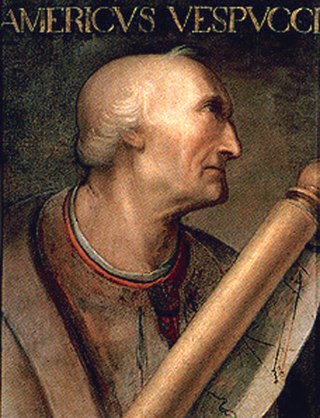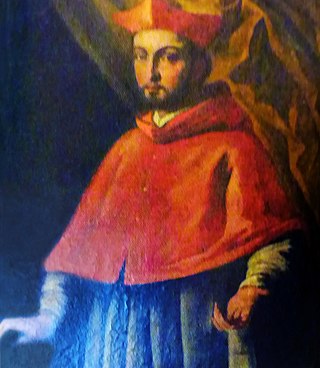This article relies largely or entirely on a single source .(March 2018) |
Vincenzo Bandello or Bandelli (died 1507) was the Master of the Order of Preachers from 1501 to 1507.
This article relies largely or entirely on a single source .(March 2018) |
Vincenzo Bandello or Bandelli (died 1507) was the Master of the Order of Preachers from 1501 to 1507.
Vincenzo Bandello came from Lombardy and joined the observant branch of the Dominican Order. [1] He became the prior of Santa Maria delle Grazie in Milan. [1] It was rumored that he was the model for Judas Iscariot in The Last Supper by Leonardo da Vinci. [1]
A General Chapter of the Dominican Order elected him master in 1501. [1] As master, he founded the observant Congregations of Ragusa in 1501 and Ireland in 1505. [1] His overall policy was to attempt to incorporate the observants into the general administration of the various provinces; for example, the Spanish observants were merged into the Province of Spain in 1505. [1] He discouraged the cult of Girolamo Savonarola (a former pupil), though he did not suppress the Congregation of San Marco founded by Savonarola. [1] In 1506, he issued a new version of the Dominican Constitutions. [1]

Amerigo Vespucci was an Italian explorer and navigator from the Republic of Florence, whose name the term "America" is derived from.

The Order of Preachers, also known as the Dominican Order, is a Catholic mendicant order of pontifical right that was founded in France by a Castilian priest named Dominic de Guzmán. It was approved by Pope Honorius III via the papal bull Religiosam vitam on 22 December 1216. Members of the order, who are referred to as Dominicans, generally display the letters OP after their names, standing for Ordinis Praedicatorum, meaning 'of the Order of Preachers'. Membership in the order includes friars, nuns, active sisters, and lay or secular Dominicans. More recently, there has been a growing number of associates of the religious sisters who are unrelated to the tertiaries.

Fra Bartolomeo or Bartolommeo, also known as Bartolommeo di Pagholo, Bartolommeo di San Marco, Paolo di Jacopo del Fattorino, and his original nickname Baccio della Porta, was an Italian Renaissance painter of religious subjects. He spent all his career in Florence until his mid-forties, when he travelled to work in various cities, as far south as Rome. He trained with Cosimo Rosselli and in the 1490s fell under the influence of Savonarola, which led him to become a Dominican friar in 1500, renouncing painting for several years. Typically his paintings are of static groups of figures in subjects such as the Virgin and Child with Saints.

Girolamo Savonarola, OP or Jerome Savonarola was an ascetic Dominican friar from Ferrara and a preacher active in Renaissance Florence. He became known for his prophecies of civic glory, his advocacy of the destruction of secular art and culture, and his calls for Christian renewal. He denounced clerical corruption, despotic rule, and the exploitation of the poor.

Diego de Deza y Tavera was a theologian and inquisitor of Spain. He was one of the more notable figures in the Spanish Inquisition, and succeeded Tomás de Torquemada to the post of Grand Inquisitor.

Frey Nicolás de Ovando was a Spanish soldier from a noble family and a Knight of the Order of Alcántara, a military order of Spain. He was Governor of the Indies (Hispaniola) from 1502 until 1509, sent by the Spanish crown to investigate the administration of Francisco de Bobadilla and re-establish order. His administration subdued rebellious Spaniards, and implemented the Encomienda system with the native Taíno population of Hispaniola.

The Order of the Immaculate Conception, abbreviated OIC and also known as the Conceptionists, is a Catholic religious order of Pontifical Right for nuns founded by Saint Beatrice of Silva. For some years, they followed the Poor Clares Rule, but in 1511 they were recognized as a separate religious order, taking a new rule and the name of Order of the Immaculate Conception.

The Third Order of Saint Dominic, also referred to as the Lay Fraternities of Saint Dominic or Lay Dominicans since 1972, is a Catholic third order which is part of the Dominican Order.

Lucy Brocadelli, also known as Lucy of Narni or Lucy of Narnia, was a Dominican tertiary who was famed as a mystic and a stigmatic. She has been venerated by the Roman Catholic Church since 1710. She is known for being the counselor of the Duke of Ferrara, for founding convents in two different and distant city-states and for her remains being solemnly returned to her home city of Narni on 26 May 1935, 391 years after her death.

The Suburbicarian Diocese of Palestrina is a Latin suburbicarian diocese centered on the comune of Palestrina in Italy.

Osanna of Mantua was an Italian Dominican tertiary who gained notice as a stigmatic and mystic.
The first decade of the 16th century marked the creation of some significant compositions. These were to become some of the most famous compositions of the century.
Hardwin von Grätz, better known in English as Ortwin, was a German humanist scholar and theologian. Ortwin was born in Holtwick and died in Cologne, Germany. He was raised by his uncle, Johannes von Grätz, in Deventer. In 1501 he left to pursue philosophical studies at the University of Cologne. After joining Kyuk Burse, Ortwin became licensed in 1505, attained Masters level in 1506, and became an Art Professor in 1507. He supplemented his salary by proofing documents for the Quentell printing house and wrote introductions and poetic dedications in the volumes of classical authors of the Middle Ages.

Robert Shorton was an English churchman and academic, first Master of St John's College, Cambridge and Archdeacon of Bath.
Juan Enguera was the Grand Inquisitor of the Crown of Aragon from 1507 to 1513.

Luigi d'Aragona (1474–1519) was an Italian Roman Catholic cardinal. He had a highly successful career in the church, but his memory is affected by the allegation that he ordered the murder of his own sister and two of her children.

Sebastian Maggi (1414–1496) was an Italian Roman Catholic priest and a professed member of the Dominicans. Maggi also served as the confessor to both Girolamo Savonarola and Catherine of Genoa.